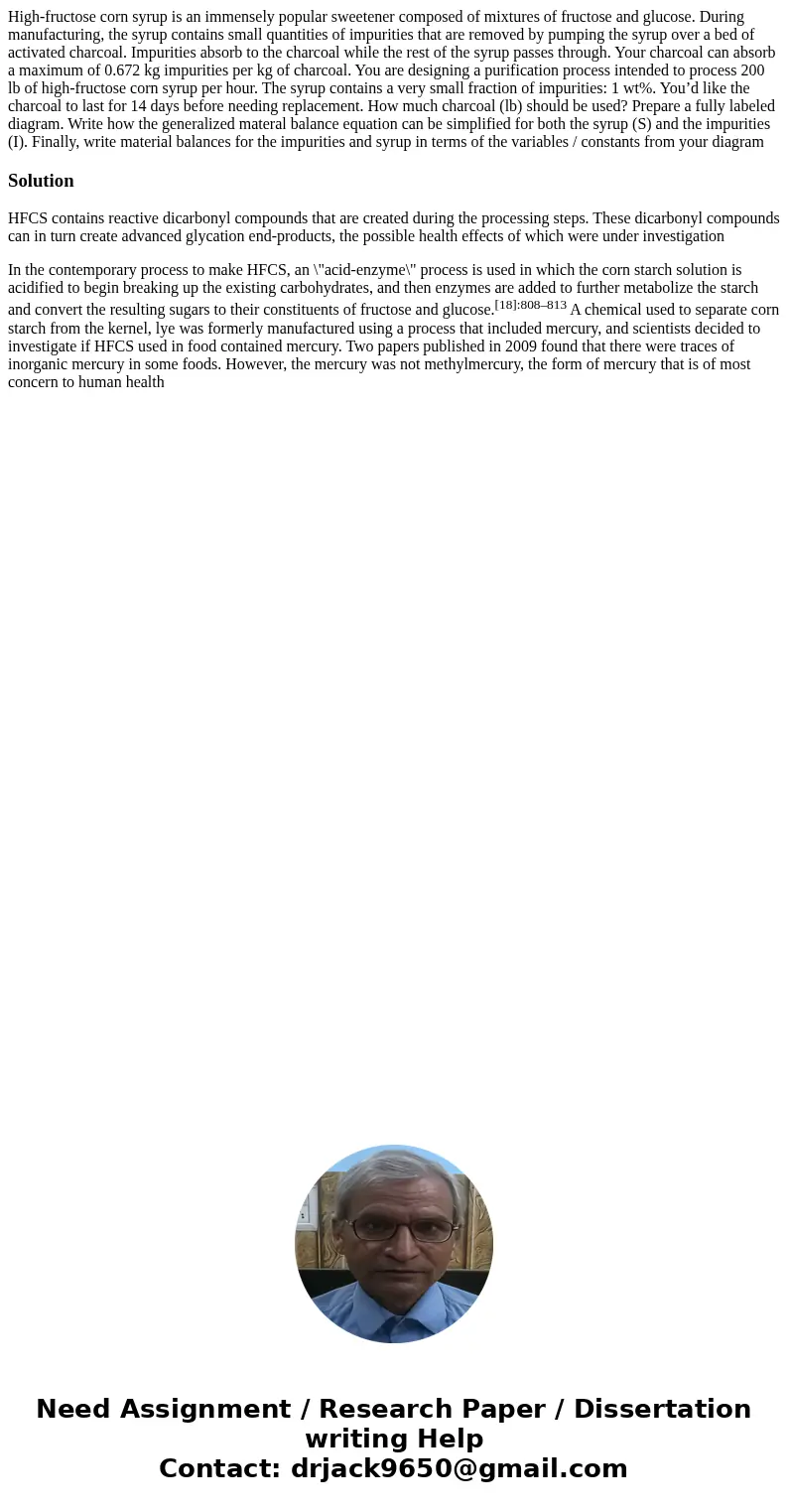Highfructose corn syrup is an immensely popular sweetener co
High-fructose corn syrup is an immensely popular sweetener composed of mixtures of fructose and glucose. During manufacturing, the syrup contains small quantities of impurities that are removed by pumping the syrup over a bed of activated charcoal. Impurities absorb to the charcoal while the rest of the syrup passes through. Your charcoal can absorb a maximum of 0.672 kg impurities per kg of charcoal. You are designing a purification process intended to process 200 lb of high-fructose corn syrup per hour. The syrup contains a very small fraction of impurities: 1 wt%. You’d like the charcoal to last for 14 days before needing replacement. How much charcoal (lb) should be used? Prepare a fully labeled diagram. Write how the generalized materal balance equation can be simplified for both the syrup (S) and the impurities (I). Finally, write material balances for the impurities and syrup in terms of the variables / constants from your diagram
Solution
HFCS contains reactive dicarbonyl compounds that are created during the processing steps. These dicarbonyl compounds can in turn create advanced glycation end-products, the possible health effects of which were under investigation
In the contemporary process to make HFCS, an \"acid-enzyme\" process is used in which the corn starch solution is acidified to begin breaking up the existing carbohydrates, and then enzymes are added to further metabolize the starch and convert the resulting sugars to their constituents of fructose and glucose.[18]:808–813 A chemical used to separate corn starch from the kernel, lye was formerly manufactured using a process that included mercury, and scientists decided to investigate if HFCS used in food contained mercury. Two papers published in 2009 found that there were traces of inorganic mercury in some foods. However, the mercury was not methylmercury, the form of mercury that is of most concern to human health

 Homework Sourse
Homework Sourse